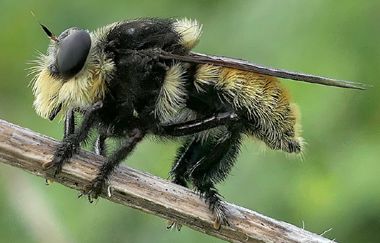
Mallophora fautrix (robber fly)
| Robber flies are top predators in the insect world. Many mimic bees and wasps; this one is an excellent fake bumble bee. The disguise helps keep it safe from predators such as birds while tricking its prey into complacency. |
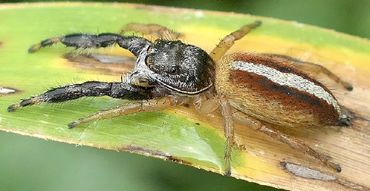
Marpissa formosa (jumping spider, female)
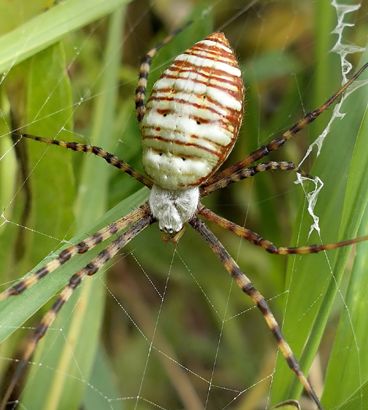
Argiope trifasciata (banded garden spider, female)
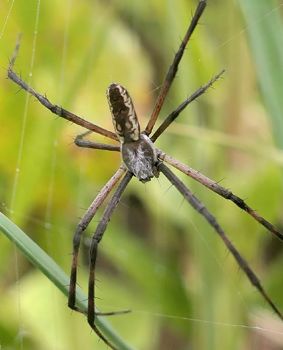
Argiope aurantia (black and yellow garden spider, male)
| In spite of being different species, as well as the female obviously having already mated and being gravid, this male garden spider was exhibiting suitor behavior: positioning his small web adjacent to hers. Mistakes happen. |
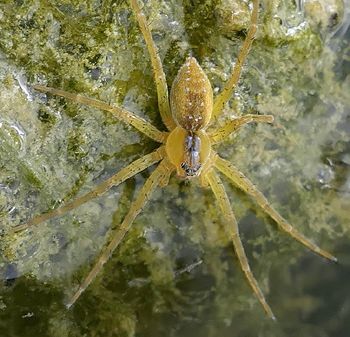
Dolomedes triton (fishing spider)
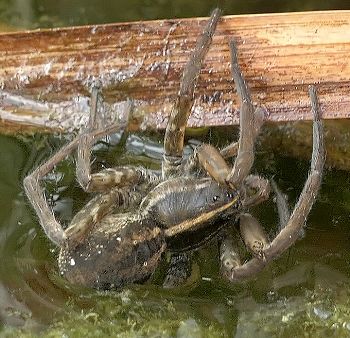
Tigrosa helluo (wolf spider)
| The wolf spider shown above was unresponsive and in danger of drowning. There is a good chance that it had been paralyzed by the nearby wasp shown below, which hovered about as if waiting for me to vacate the premises. |
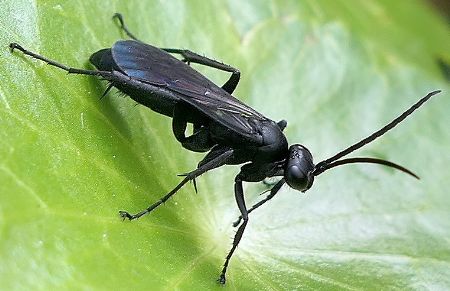
Unknown sp. (spider wasp)

Eudiagogus pulcher (sesbania clown weevil)
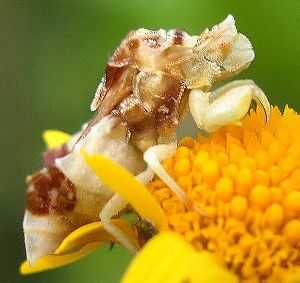
Phymata sp. (ambush bug)
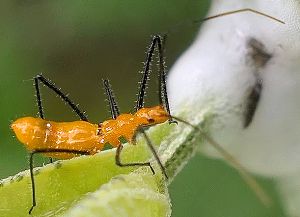
Zelus longipes (milkweed assassin bug nymph)
| If there is any doubt about why spittlebug nymphs create their protective foam retreats, the avoidance behavior of the assassin bug certainly proves the point. It kept approaching, but never touched, the white bubbles. |

Rhinchomitra microrhina (dictyopharid planthopper)

Strophostyles helvula (trailing wild bean)

Bidens frondosa (devil's beggartick)

Acmella oppositifolia (oppositeleaf spotflower)

Cyperus strigosus (straw-colored flatsedge)
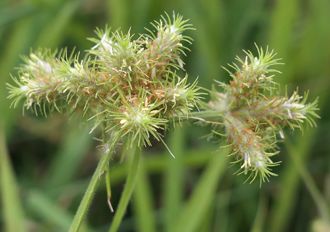
Fuirena squarrosa (hairy umbrella-sedge)
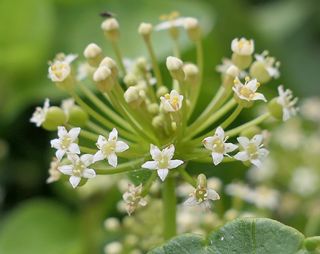
Hydrocotyle umbellata (water pennywort)

Vitis cinerea (Spanish grape)
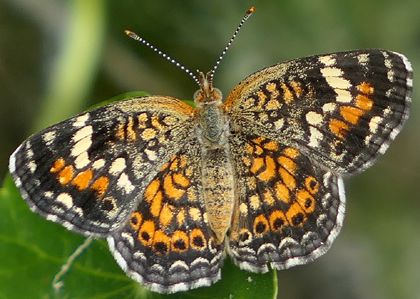
Phyciodes phaon (Phaon crescent)
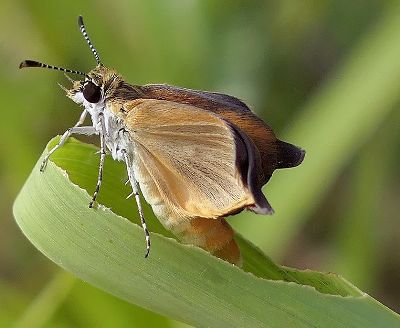
Ancyloxypha numitor (least skipper, teneral)
| This butterfly has just eclosed from its chrysalis, which was hidden in the rolled grass leaf that the caterpillar had nibbled before pupating. Within a short time, its wings will completely expand and enable it to fly away. |
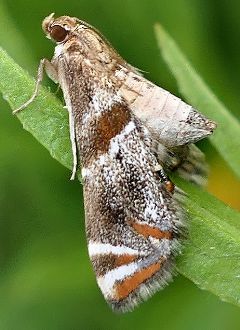
Petrophila jaliscalis (moth)
| Moths in this genus have aquatic larvae. The caterpillars create silken retreats on submerged rocks and feed on algae. It's not as strange as it might seem, since moths (Lepidoptera) are closely related to caddisflies (Trichoptera). |
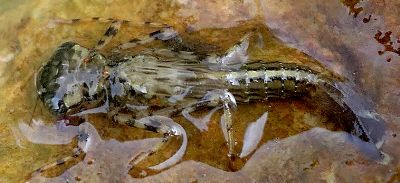
Argia sp. (dancer naiad)

Argia nahuana (Aztec dancer, male)
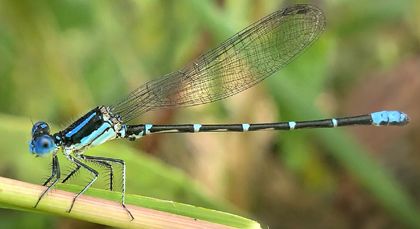
Argia sedula (blue-ringed dancer, male)
| One characteristic that helps separate different kinds of similar looking damselflies is the resting wing position. As shown above, Dancers (Argia spp.) tend to hold their wings up over the abdomen while forktails (Ischnura spp.), illustrated below, frequently keep their wings low enough to touch their abdomens. Unfortunately, bluets (Enallagma spp.) also hold their wings like this, so learning color patterns is still necessary if you want to identify them. |

Ischnura posita (fragile forktail, female)

Ischnura ramburii (Rambur's forktail, female)
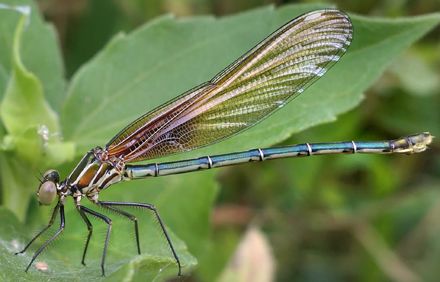
Hetaerina americana (American rubyspot, teneral female)
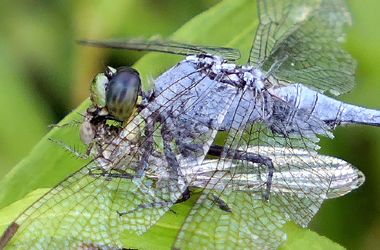
Erythemis simplicicollis (eastern pondhawk, male,
eating American rubyspot)
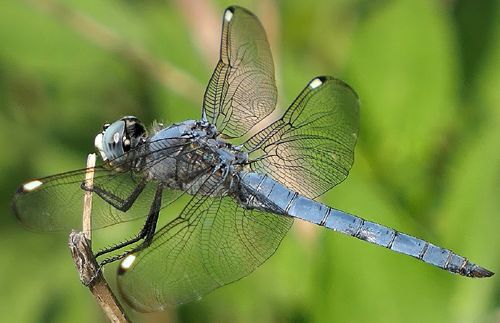
Libellula comanche (Comanche skimmer, male)
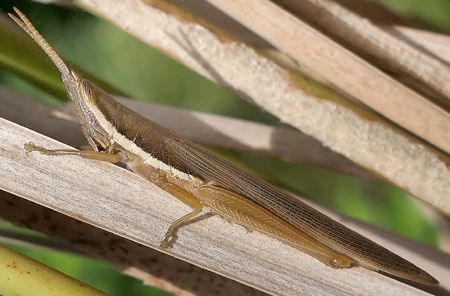
Leptysma marginicollis (cattail toothpick grasshopper)

One of the inviting rivulets winding through the vegetation

Ochterus banksi (velvety shore bug)
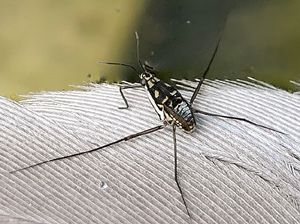
Trepobates subnitidus (water strider)
| Most of the true bugs (Hemiptera) seen around water are predators or scavengers. They have sucking mouthparts which drain the juices out of their prey. Some live on the shoreline or water surface (two images above), while others swim underwater (next three images). None of them have gills so they must breathe air, often through a tube or opening at the rear. |
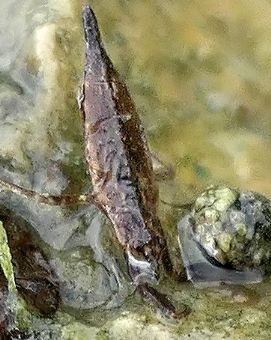
Curicta scorpio (water scorpion nymph)
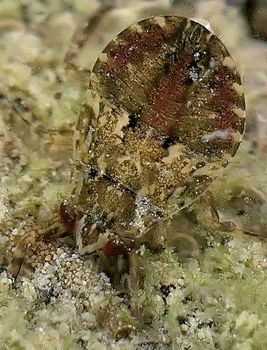
Belostoma sp. (giant water bug nymph)
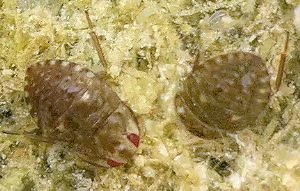
Unknown sp. (creeping water bug nymphs)
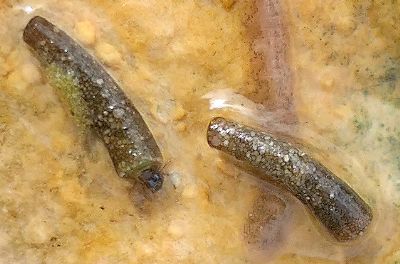
Unknown sp. (caddisfly larvae)
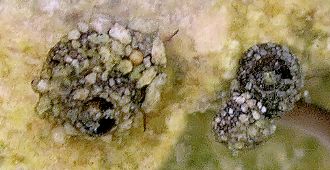
Helicopsyche sp. (snail-case caddisfly larvae)
| The intricate retreats created by the caddisflies shown above are constructed using silk to secure small rocks and sand. The silk, like that produced by lepidopteran caterpillars, comes from glands near the mouth. |
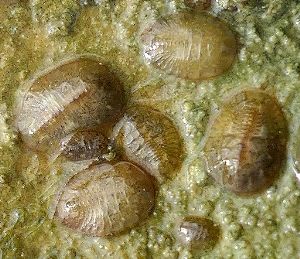
Psephenus texanus (water penny beetle larvae)
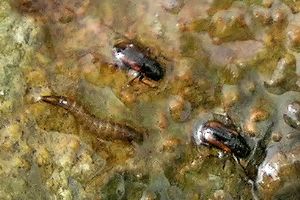
Stenelmis sp. (riffle beetle adults & larva)
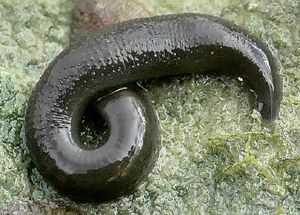
Erpobdella sp. (leech)

Placobdella sp. (leech)
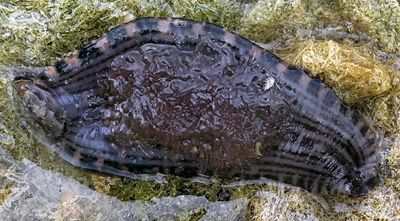
Placobdella sp. (leech, underside with young)

Procambarus clarkii (red swamp crayfish, immature)
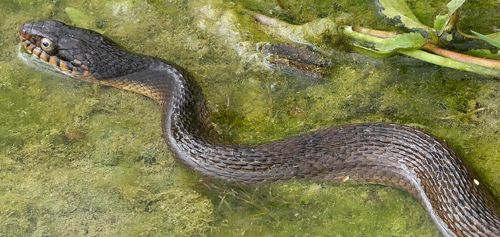
Nerodia erythrogaster (plain-bellied water snake)

Trachemys scripta elegans (red-eared slider biting snail shell)

![]()